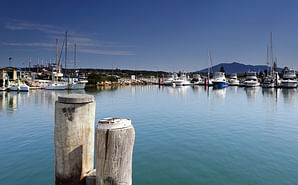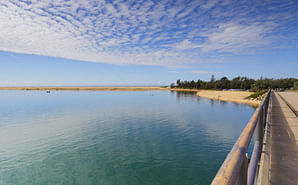Bega and Brogo Rivers Floodplain Risk Management Study and Plan
This study and plan is being undertaken to assess options to manage the flood risk for the Bega and Brogo Rivers.
Background information
Bega Valley Shire Council engaged consultants Cardno during late 2015 to assist with the preparation of the Bega and Brogo Rivers Floodplain Risk Management Study and Plan. The project was facilitated in part from grant funding and technical assistance from the Office of Environment and Heritage’s Floodplain Risk Management Grant programme.
The Floodplain Risk Management Study and Plan project followed on from the Bega and Brogo Rivers Flood Study, undertaken in 2014, which identified existing flooding behaviour within the river catchments. The purpose of the Floodplain Risk Management Study and Plan was to identify and recommend appropriate actions to manage flood risks in the Bega and Brogo River catchments.
History of flooding in the area
The Bega Township has a history of flooding from the Bega and Brogo Rivers. In February 1971 Bega experienced a record flood that inundated numerous properties and created significant damages. Another large flood event impacted the area in March 2011. There were also a number of other significant events in March 2012, February 2010 and March 1983.
The 1971 flood event resulted in substantial damage in the town of Bega. It was reported that two people lost their lives, over 50 bridges were destroyed, and the damage was estimated at $7 million, and electricity and telephone lines were out of service. Towns south of Bega were out of water supply as water mains were destroyed. Hancock (i.e. Tathra) Bridge spanned 700 feet near Mogareeka but only six of the fifteen spans remained in place after the flood had passed.
The study area
The Bega and Brogo River catchments have a combined area of approximately 1790 km2, and converge at the township of Bega before flowing into the Pacific Ocean approximately 24km downstream. Both rivers originate in farmland below an escarpment of the Great Dividing Range to the north and west of Bega.
Flooding within the catchment has the potential to impact a number of communities including Bega, Mogareeka, Tathra, Candelo and Bemboka.
The Bega River borders the township of Bega on its western, northern and eastern sides. The inundation patterns for past floods indicate that Bega Township is mainly flooded by overbank flow from the Bega River. Floodwaters back up from the confluence of the two rivers and spread over low-lying areas.
The study and plan
The preparation and implementation of Floodplain Risk Management Plans is the cornerstone of the NSW Government’s Floodplain Management Program that is delivered in accordance with the 2005 NSW Government Floodplain Development Manual. Management plans can eliminate the ad-hoc decision making process which has contributed too many present day flooding problems.
The Floodplain Risk Management Study and Plan was generated with input from Council’s Floodplain Risk Management Focus Group, public participation and community consultation and includes an appropriate mix of management measures and strategies to effectively manage the full range of flood risk.
The outcome is now a plan that details how existing and future flood risk within the Bega and Brogo Rivers Catchment at key localities can be managed.
The initial Floodplain Risk Management Study was undertaken for the Bega and Brogo Rivers catchment to assess the existing flood risks and identify a range of potential options for managing the identified flood risk. The identified options were then assessed using a multi-criteria analysis to then determine the 12 top ranked options for inclusion in the floodplain risk management plan.
The initial option identification was completed using collaboration and community participation during March 2016. The community again was crucial in finalising the endorsed options for inclusion in the Floodplain Risk Management Plan following public exhibition of the draft reports in November 2017. The final reports were formally endorsed by Council on 11th April 2018.
The final Flood management measures and strategies include a mixture of:
- Flood modification options using on ground works such as proposed flood flaps, proposed road upgrades and proposed levees;
- Property modification options using planning controls such as building and development controls for future development in flood prone land, flood proofing guidelines or potential voluntary purchase schemes; and
- Emergency response measures such as improved information for response planning, increased community education and awareness, data collection strategies and installation of flood warning infrastructure.
Download the Floodplain Risk Management Study and Plan
-
Floodplain Risk Management Study
(this is a large document which has been broken down into the following) - Main Document
- Figures
- Appendixes A to F
-
Floodplain Risk Management Plan
The process






Was this helpful?